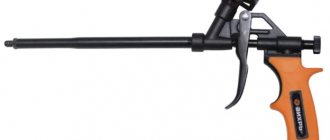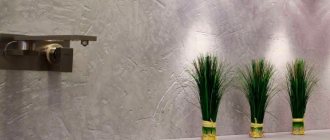If the groundwater near your house is not too far from ground level, you are incredibly lucky. What if the situation is just the opposite? Then you simply cannot do without a well pump - reliable, powerful and efficient, and at an adequate price. Today we will look at the rating of the TOP 7 best pumps for wells: which one to choose, pros and cons, reviews, price - with its help you will finally choose the ideal pump option.
Varieties
Most often, 3 types of pumps are used in wells: screw, vibration and centrifugal.
Screw pumps. The main feature of this type of pump is a special spiral on the rotor and internal thread on the stator. The operating principle of this model is quite simple: water rises in a helical spiral due to the rotation of the rotor. The best option for silting a source or pumping a new well, since you can use a screw pump even with very dirty water. The efficiency is quite low, only 65%, the dimensions are also rather large, so screw models are not suitable for operation in small-diameter wells.
Vibration pumps. The operation of the next type of pump is associated with the action of a vibrator with an electromagnetic coil. When an alternating electric current passes through the coil, an electromagnetic field arises in it - it is this that sets the vibrator in motion. Thanks to this, a pumping effect is created in the water channel. Please note: this type of pump is very sensitive to power supply fluctuations (when the voltage drops by 10%, the pressure drops by 50%). That is why, to ensure stable operation of the device, we strongly recommend connecting the vibration pump through a voltage stabilizer.
Centrifugal pumps. Centrifugal pumps are considered the most efficient. Why? Firstly, due to high performance. Secondly, such models have a high efficiency of about 85%, so they can be used even when pumping water from deep artesian sources. And finally, thirdly, centrifugal pumps have a small body diameter (approximately 3 inches) - such devices can be used in wells with a pipe diameter of 12 cm or more.
Adviсe
- When choosing the appropriate version of the pumping system, it must be taken into account that intensively working filters may slightly reduce the generated pressure. Professionals recommend paying special attention to joints that are exposed under water during normal operation. It is at these points that the most problems arise, even with minor manufacturing defects or violation of operating principles.
- The bulk of pumps are now designed for four-inch casing pipes. Too frequent starts of household pumps are considered to be turning them on more than once within 120 seconds.
- Sometimes pumps get stuck in wells, and a solution to this problem is usually impossible. As a result, both the device itself and the well are lost to the owner. It is much better to take care to exclude such a situation in principle. Electrical cables should be secured with bundles to pipes or hoses. Yes, it will take a few minutes to cut them off and reinstall them each time the pump is lowered, but this is economically justified.
- It happens that you have to pull the pump by a pipe, hose or even cable. Then you need to carefully monitor that all these three elements rise evenly and there are no weak spots anywhere.
- It is unacceptable to snap the cable to cables and hoses. If you notice a dangerous weakening, you should not panic or speed up your work. It is better to push the pump a little deeper, holding on to the hose or pipe.
- If it is impossible to move the pump down in this way, you can improvise (by tying a crowbar to a rope, etc.). But even if the “experiment” has a favorable outcome, no one can vouch for the safety of the case and the operability of the system. If the silt, after a long period of inactivity of the well, has risen above the pump, all that remains is to try to pump the latter, but without too much enthusiasm.
- When it is not possible to achieve the appearance of a gap between the housing and the well, then, alas, you will have to come to terms with the loss. The flow rate of the water source will sharply decrease even with complete success (if it can be called such), and the quality may drop.
- You can prevent back siltation and the associated jamming of the pump if you do not lower it more than 10 m below the dynamic line and raise it to the surface at least once every 60 months. If such a situation does arise, you can try to pull the device by rocking it. It is advisable to make this attempt with the pump running. This will help lift particles of crushed silt to the top.
- When you can’t pull out the device using simple methods, you need to immediately turn to professionals. Note: even the latest equipment can solve only about 70% of jam problems aggravated by “innovative approaches”
- Spliced hoses and cables must not be used. Each such connection increases the risk of jamming. An additional prevention is a fairly wide gap between the unit and the walls. The cost of drilling a very wide well at once is completely justified compared to paying for technical assistance services or preparing a new channel. It is also worth investing in a head that will prevent the water source from clogging with various objects.
- Preventative work and inspections on well pumps are recommended to be carried out in the spring and with the approach of cold weather. To reduce the likelihood of interruptions and the occurrence of extraneous noise, it is necessary to regularly change the lubricant. Experts advise assessing the condition of the hoses or pipes connected to the pumps during maintenance. It is not recommended to run the system more often than necessary; this will inevitably result in a quick breakdown.
- Only minor damage can be repaired on your own, while any significant defects can only be repaired by professionals.
- When removing the pump for service or repair, you must first disconnect it from power. It is better to pull out the device with assistants and without sudden movements. Install a working device in the reverse order. A test run is required, even if there is no practical need for it. Before the first maintenance, it is recommended to study the technical documentation again.
Installation of equipment
Installation of a pump in a well should only be carried out by qualified craftsmen. You need to contact a qualified company that offers turnkey services. Here you will not only equip the well, but will also be advised on the optimal characteristics for the pump. The fact is that the construction of a well itself is a technologically complex process in which special equipment is used. First of all, it is necessary not only to allocate a place for the future water supply system, but also to select the area where this will be done most correctly.
Popular models
Our own rating will help you figure out which pump is best for a well. It took into account the following indicators:
- cost of the device, its installation, operating features;
- period of use, warranty and quality of service, materials used for production, quality;
- manufacturer;
- automation, control, parameters, purpose of the liquid itself;
- type of well, type of submersible device, installation method.
The pump will be an indispensable device for estates, plots, cottages, gardens. How to choose a pump for a well and not make a mistake, you need to take into account important characteristics. The first important indicator is water quality, since many models are very sensitive to solid particles. The manufacturer must indicate the permissible level of small particles. If you choose the wrong unit, it will quickly fail due to strong abrasive effects.
How to choose and what to pay attention to?
When choosing a pump for a well, you should pay attention to the following criteria:
- Productivity . The pump for the well must cover at least 50% of the total water consumption in the water supply system and at the same time not exceed the flow rate of the well (so as not to suck water out of the well faster than it is collected there). The well flow rate can be viewed in the installation passport.
- Maximum immersion depth . Here we mean the depth of immersion under water, and not generally into the well. For example, if the well has a total depth of 50 m, but from the surface to the water table is 20 m, then there is 30 m of water space, and if you want to lower the unit almost to the very bottom, then its maximum immersion depth should be at least 30 m.
- Power cord length . The power cord must be at least as long as the total depth of the well (if lowered to the very bottom) plus the distance to the outlet.
Video description
In this video about the choice, how to piping and installing a pump in a well:
The quality of the water in the well is of great importance. Household appliances can only operate with clean liquid, and sand, solids and fibrous particles can quickly damage the unit. The characteristics of the mechanism must correspond to the intensity of water use, but do not allow all the liquid to be pumped out so that the pump does not run dry. If there is no special protection, the device may fail. You should not buy models from unknown brands. They are often of low quality, ineffective and do not last long. Often it is even difficult to find spare parts for them.
Which pump to choose Source ftg.com.ua
Model selection
Today, manufacturers offer submersible, deep, and borehole pumps for wells. They differ in characteristics, method of application, dimensions and installation method. When choosing a model, you need to consider the following indicators:
- water level;
- bottom base;
- formation depth;
- pipe diameter and other factors.
Specialized companies must provide their clients with a technical passport and indicate in it all the characteristics for the required device. It is important to choose a device whose performance will correspond to the rate of water accumulation. If the unit is very powerful, then the well will quickly empty and the device will run dry, which leads to rapid wear of parts.
Different types of submersible devices Source variant-a.ru
Centrifugal units consist of a wheel and chambers that divide it into stages (from 1 to 4). The wheel has two rims with blades; when rotating, it creates pressure. Models are compact, high-performance. They are characterized by infrequent maintenance, long service life, installation in different wells, but are quite expensive.
Vibrating ones consist of an electromagnet and a vibrator. Vibrations move the piston. Water is drawn into the chamber and then pushed out into the channel. Budget devices are less productive and can work for a long time.
Surface centrifugal unit Source hot-point.com.ua
You can select a surface water pump for your dacha based on certain characteristics and parameters:
- planned watering, keeping animals, livestock, poultry;
- number of family members, water intake points, set of household appliances, plumbing fixtures, presence of a fountain, artificial pond, swimming pool;
- use of one point for several areas, relation to water quality.
Depth models are cylindrical in shape. For the production of the housing, a material is mainly used that is not affected by corrosion. A grate is installed at the bottom for suction and filtration. There can be two types, so which submersible pump for a well is better, screw or centrifugal, must be determined in accordance with the important parameters described below.
Deep aggregates Source frontiersin.org
Sometimes wells are flooded, so it is necessary to install special models, but they are more expensive. It is necessary to abandon rubber hoses and use only plastic structures. When choosing a device, the main indicator is daily water consumption, but it must be remembered that in summer water consumption is always greater than in winter. Also taken into account is the cost of irrigation, animals and other needs, which significantly increase water consumption.
High pressure unit Source bukalapak.com
See also: Catalog of companies that specialize in water supply and sewerage.
Principle of operation
The operation of each device depends on its type. The principle of operation is largely influenced by the elements with which the pump is equipped.
The operating principle of vibration equipment depends on the movement of the piston. An electromagnetic field is created inside the unit when electricity is supplied - this is how the pump piston begins to work. And the discharged pressure generated in the working chambers of the vibration pump begins to push water into the free space of the chambers. Water also passes through the channels into the pipeline.
A centrifugal pump has a different operating principle, which is associated with the rotation of the impeller. A centrifugal force is created along the perimeter of the working chambers: it is this force that pushes the water into the pressure channel, and then into the pipeline.
During operation of the screw device, the rotor rotates, as a result of which the water begins to rise along the screw spiral.
Customer Reviews
Well pump BELAMOS TF3-40 (550 W) is almost silent. Compared to vibration, it is much quieter. Has a relatively small size. Great design. Good steel. It really doesn't rust. Sometimes clay gets in. But the pressure holds.
The borehole pump GILEKS Vodomet PROF 55/50 (600 W) is easily installed on wells and shallow boreholes. The body is made of high-quality stainless steel, inside there are impellers made of high-strength plastic. Low vibration level, quiet operation. The weight allows the use of a plastic head for wells.
A borehole pump VORTEX CH-50 (750 W) was installed on a summer cottage for a well. There are special rings for attaching the cable, for lowering and lifting. There is a thermostat for overheating. We got clogged with sand a couple of times, the safety device worked, we cleaned it and it works again.











